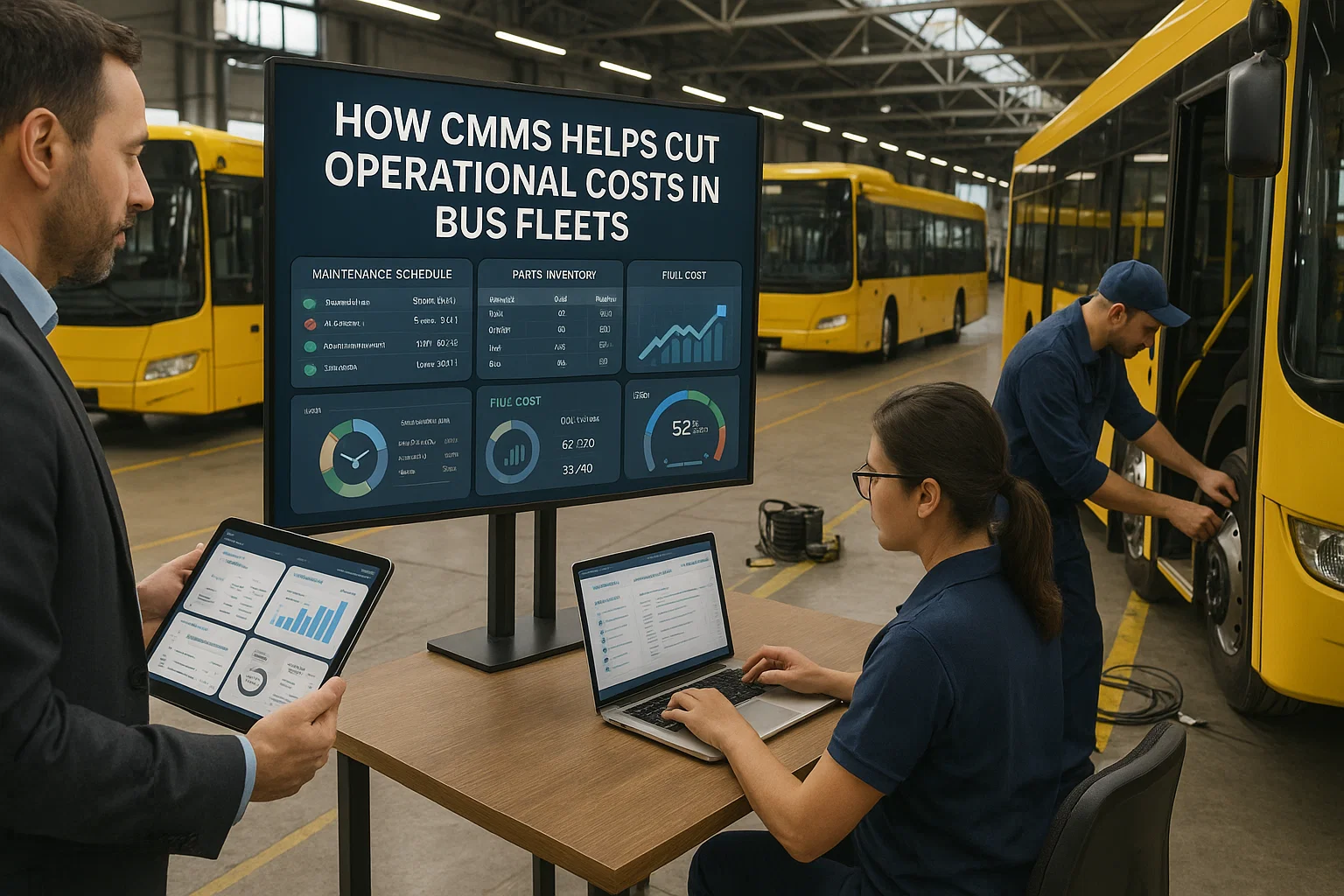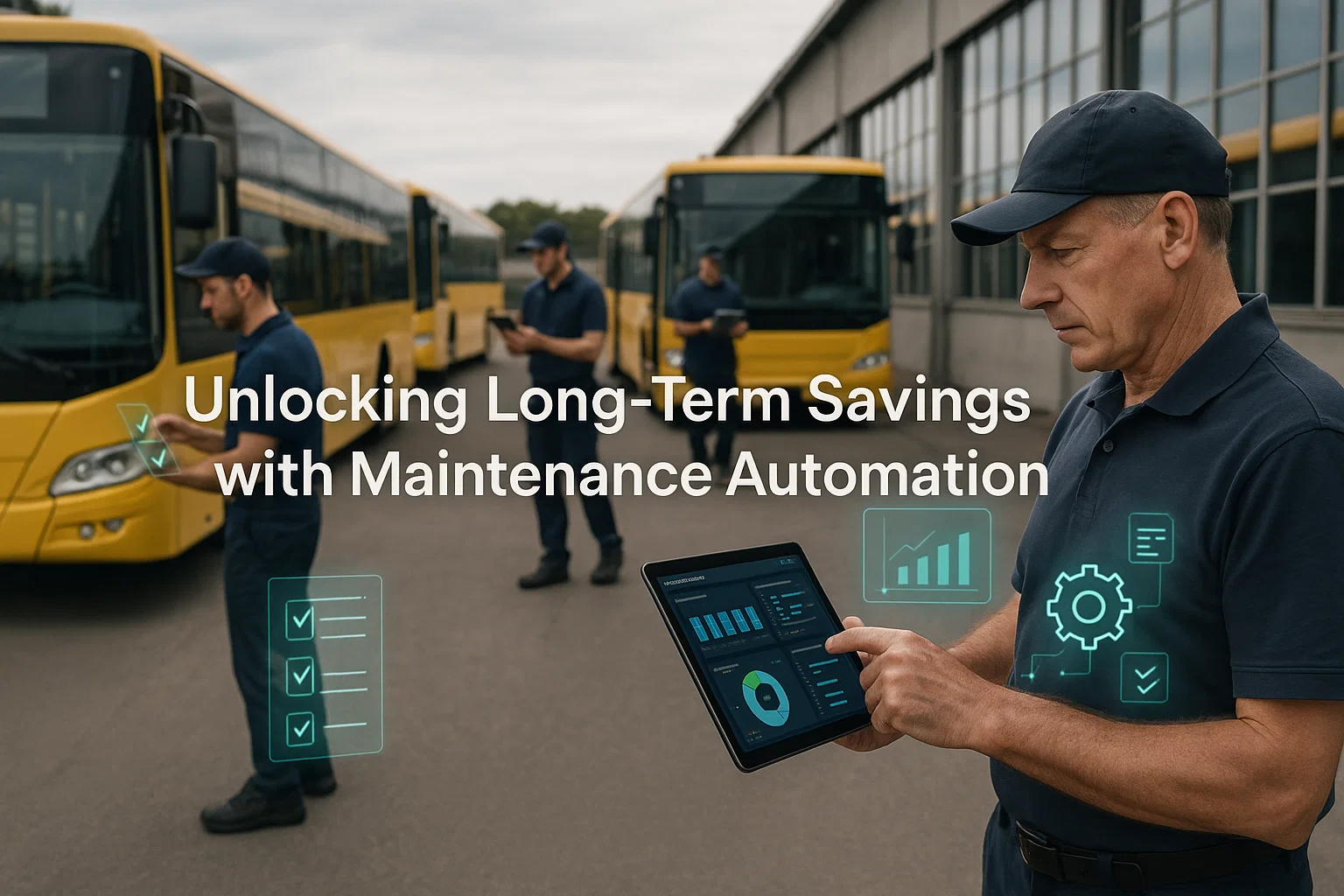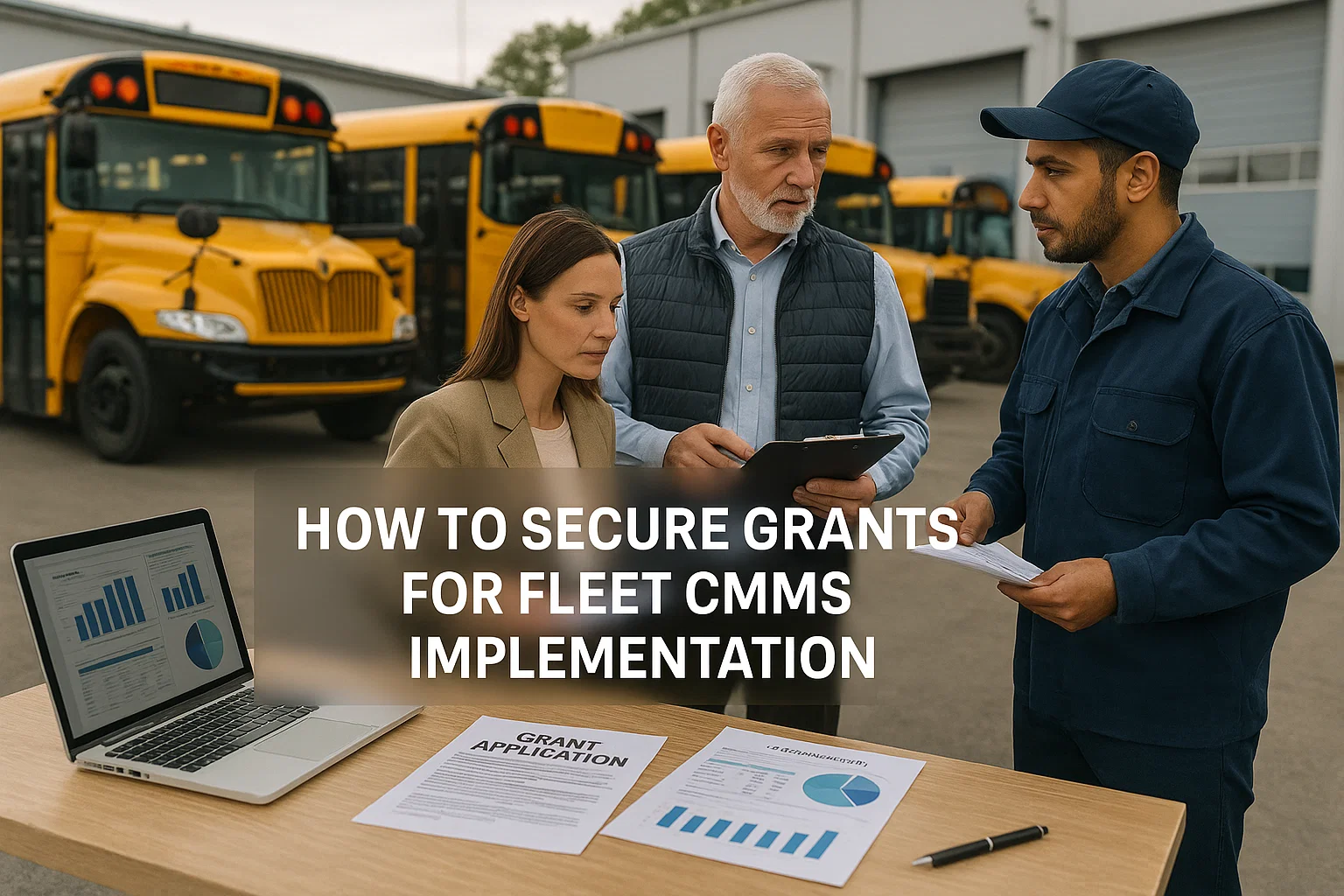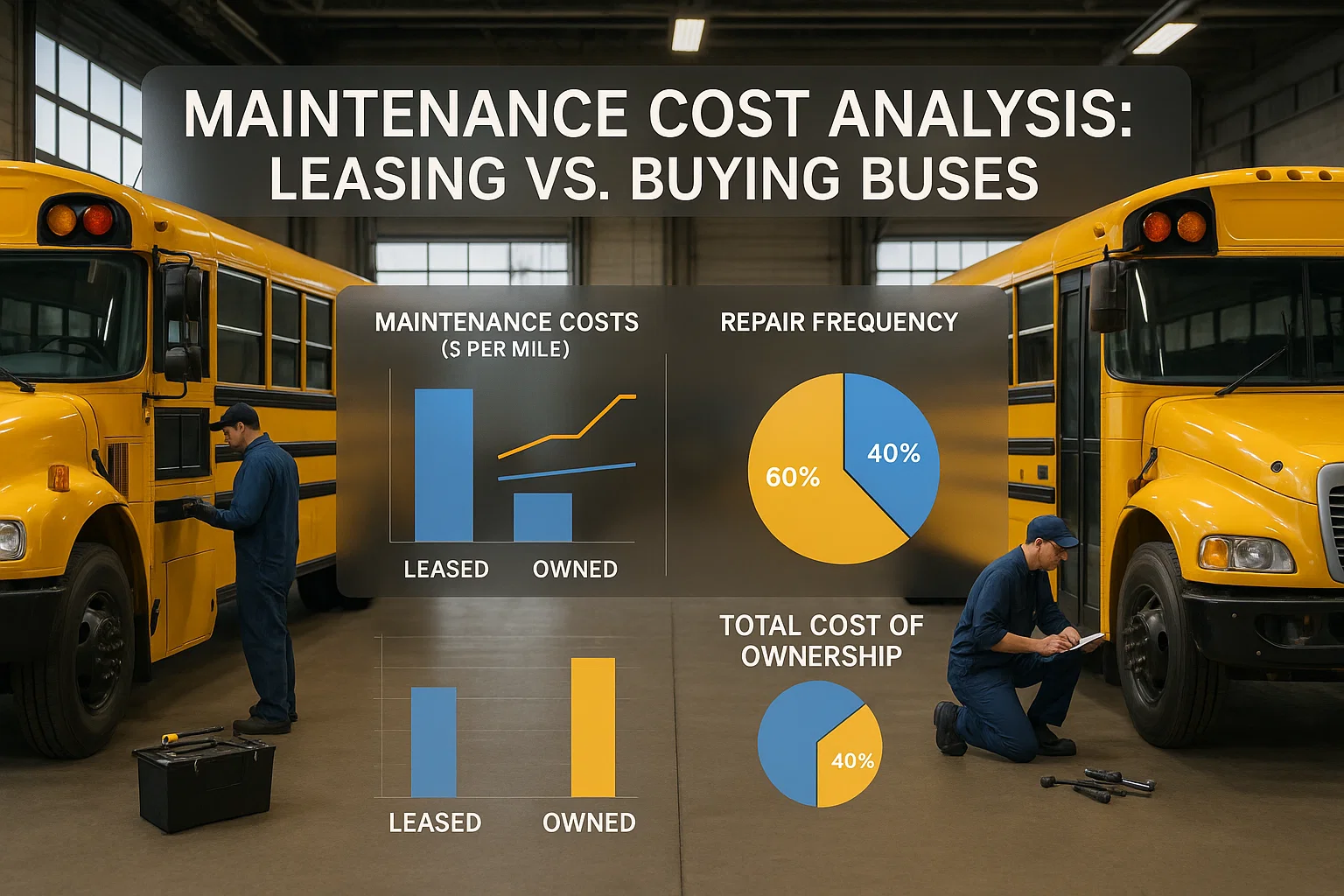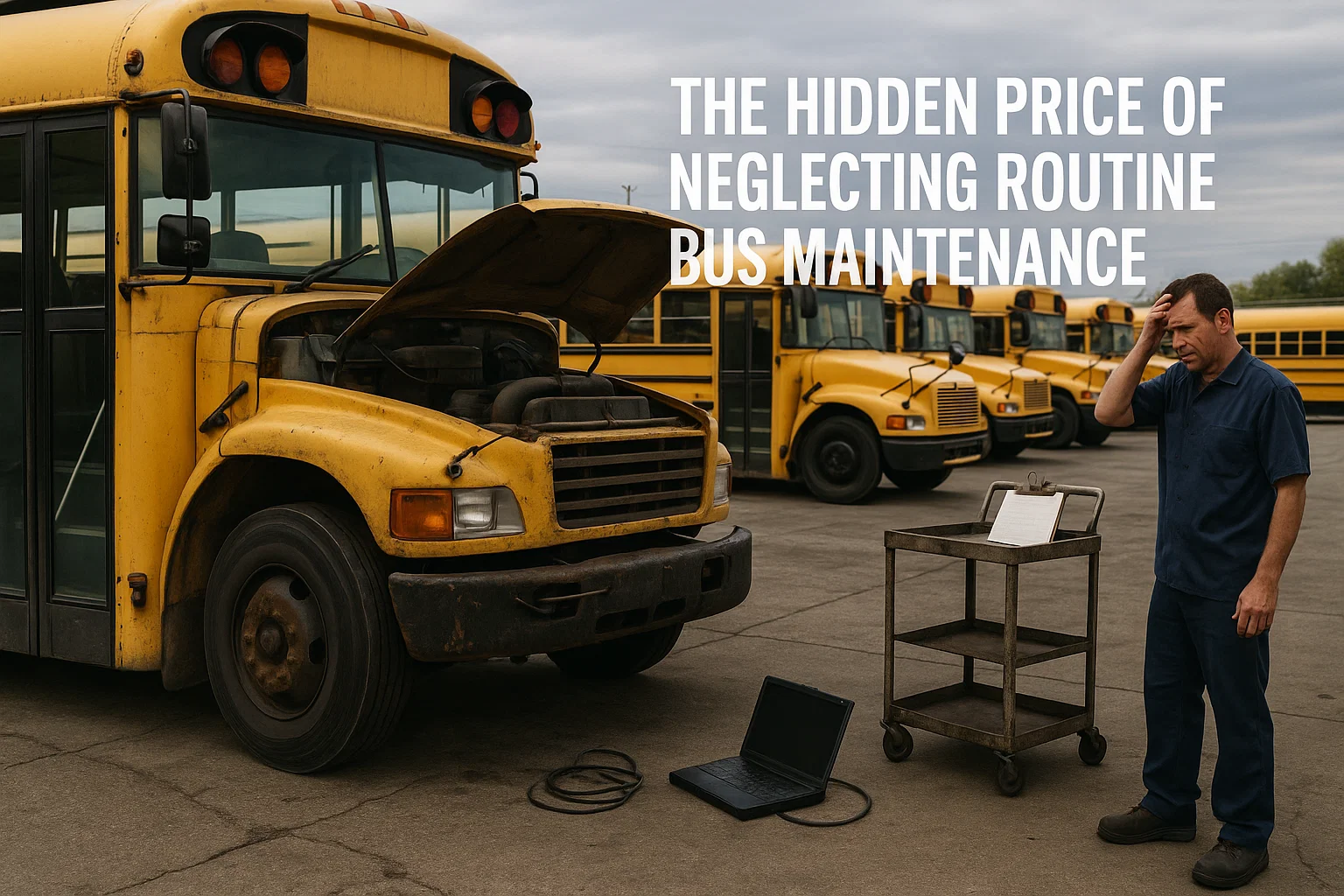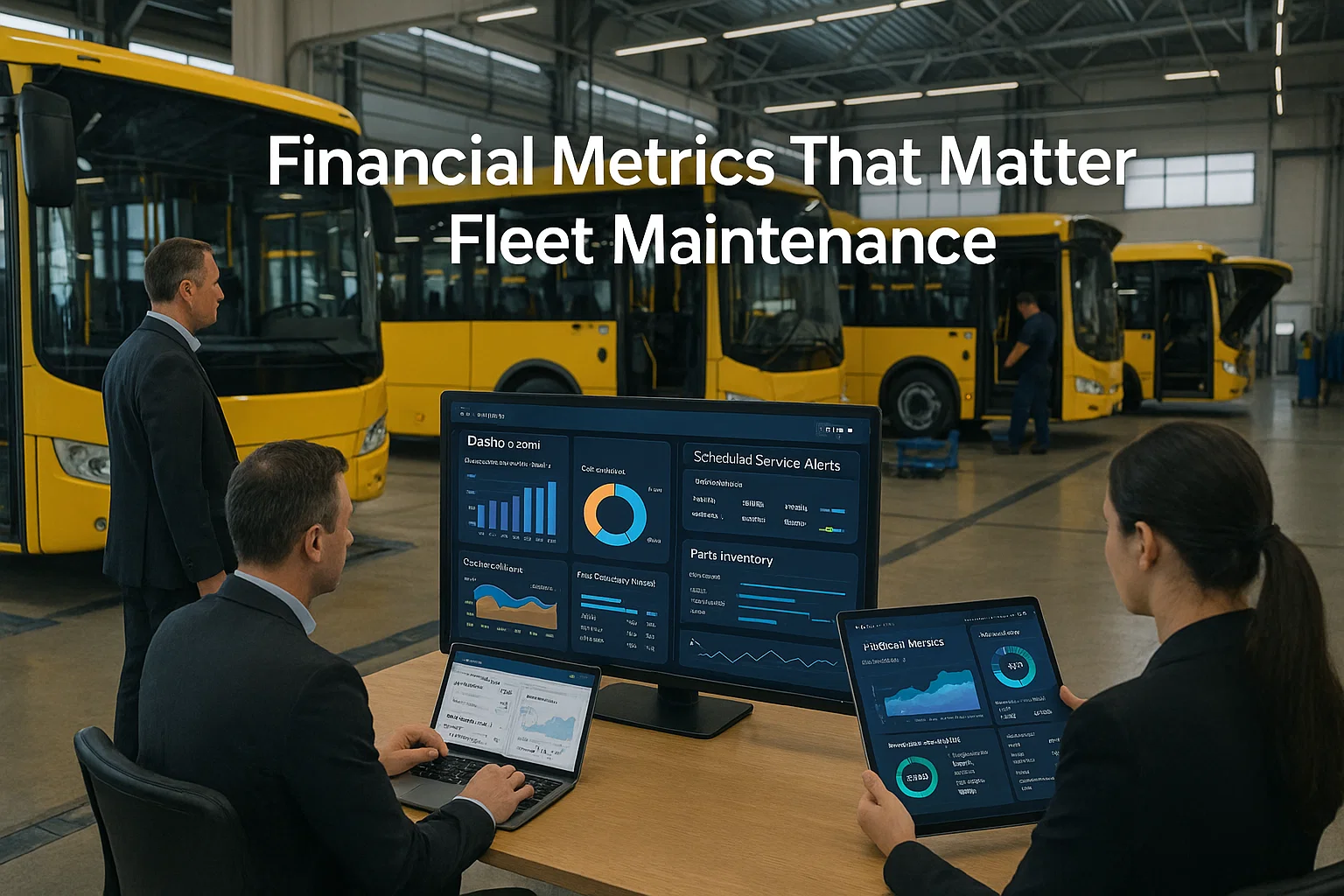Fleet operators across the United States face mounting pressure to reduce operational costs while maintaining service quality and safety standards. Computerized maintenance management systems emerge as powerful cost-reduction tools that transform expense-heavy operations into lean, efficient enterprises. Through systematic optimization of maintenance processes, resource allocation, and decision-making, these platforms deliver measurable savings that directly impact bottom-line performance.
The financial impact of implementing fleet optimization technology extends far beyond simple maintenance savings. Organizations report comprehensive cost reductions averaging 35-45% across maintenance operations, 15-20% in fuel consumption, and 25-30% in parts inventory investment. These improvements compound over time, creating sustainable competitive advantages in increasingly cost-conscious transportation markets.
This comprehensive analysis explores how modern maintenance platforms systematically identify and eliminate cost drivers throughout fleet operations. From predictive maintenance that prevents expensive breakdowns to optimized routing that reduces fuel consumption, CMMS technology provides the tools necessary to achieve operational excellence while significantly reducing expenses across every aspect of fleet management.
Slash Your Fleet Operating Costs
Discover proven strategies that leading fleets use to reduce expenses by 35% or more.
Getting StartedBook a Demo
Reducing Maintenance Labor Costs
Labor represents the largest controllable expense in fleet maintenance, typically accounting for 40-50% of total maintenance budgets. Maintenance management software dramatically reduces labor costs through workflow optimization, automated scheduling, and enhanced technician productivity. These improvements translate directly to bottom-line savings while maintaining or improving service quality.
Workflow Automation and Efficiency
Manual work order creation, parts lookup, and documentation consume valuable technician time that automated workflow systems eliminate. Digital work orders populate automatically with vehicle history, required parts, and step-by-step procedures, reducing administrative time by 60-70%. Technicians spend more time turning wrenches and less time pushing paper, increasing productive labor hours by 35-40%.
Mobile access to repair information eliminates trips to offices or parts rooms, saving 30-45 minutes per day per technician. For a 20-technician shop, this translates to 150-200 additional productive hours weekly, equivalent to adding 4-5 full-time positions without increasing headcount. First-time fix rates improve by 25% when technicians have complete information at their fingertips.
Strategic Overtime Management
- Predictive Scheduling: Forecast maintenance needs to level workload and minimize overtime requirements
- Skill-Based Assignment: Match technician expertise to tasks, reducing repair time by 20-30%
- Cross-Training Identification: Identify skill gaps that create bottlenecks and overtime
- Shift Optimization: Balance maintenance across shifts to reduce premium pay requirements
- Contractor vs. Overtime Analysis: Determine when outsourcing beats overtime costs
Minimizing Parts and Inventory Expenses
Parts inventory represents millions in tied-up capital for larger fleets, with carrying costs consuming 20-30% of inventory value annually. Inventory optimization systems within CMMS platforms reduce these costs dramatically while improving parts availability. This seemingly contradictory achievement occurs through intelligent demand forecasting and automated reordering.
Smart Inventory Management Strategies
Demand Forecasting
Predictive algorithms reduce safety stock requirements by 25% while maintaining 98% availability
Obsolete Parts Identification
Automated analysis identifies dead stock, freeing $50,000+ in working capital annually
Vendor Optimization
Consolidated purchasing and negotiated agreements reduce parts costs by 15-20%
Just-In-Time Parts Procurement
Integration between maintenance scheduling systems and inventory management enables just-in-time parts ordering that minimizes carrying costs. When preventive maintenance is scheduled weeks in advance, parts arrive days before needed rather than sitting on shelves for months. This approach reduces inventory investment by 30-40% while eliminating emergency procurement premiums.
Automated reordering based on min/max levels and lead times ensures parts availability without overstocking. The system tracks usage patterns, adjusting reorder points seasonally and identifying opportunities for bulk purchases during supplier promotions. These optimizations typically save 15-20% on parts spending annually.
Preventing Costly Emergency Breakdowns
Emergency breakdowns devastate operational budgets through repair costs, towing expenses, rental replacements, and service disruptions. Predictive maintenance technology prevents 60-70% of potential breakdowns by identifying failing components before they cause roadside failures. This proactive approach transforms catastrophic expenses into manageable, planned maintenance events.
The True Cost of Breakdowns
A single major breakdown costs $15,000-25,000 when factoring emergency repair premiums, towing, rental vehicles, and lost revenue. Preventive maintenance programs cost 3-5 times less than reactive repairs while eliminating associated disruptions. For a 100-bus fleet experiencing 50 major breakdowns annually, prevention saves $500,000-750,000 per year.
Beyond direct costs, breakdowns damage customer satisfaction, driver morale, and organizational reputation. Late arrivals caused by breakdowns reduce ridership, while drivers frustrated by unreliable vehicles seek employment elsewhere. These indirect costs often exceed direct repair expenses, making breakdown prevention critical for long-term success.
Predictive Maintenance ROI
- Component Monitoring: Sensor data identifies failures 30-60 days before occurrence
- Fluid Analysis: Oil and coolant testing prevents 85% of engine failures
- Vibration Analysis: Early detection of bearing and shaft problems reduces costs 70%
- Thermal Imaging: Identifies electrical and mechanical issues before failure
- Performance Trending: Gradual degradation patterns trigger intervention
Calculate Your Cost Savings Potential
See exactly how much your fleet can save with advanced CMMS implementation.
Getting StartedBook a Demo
Optimizing Fuel Consumption and Efficiency
Fuel represents 25-30% of operating costs for diesel fleets, making consumption optimization critical for profitability. Fleet management systems reduce fuel costs through multiple mechanisms: proper maintenance that ensures optimal engine performance, route optimization that minimizes miles traveled, and driver behavior monitoring that eliminates wasteful practices.
Maintenance-Related Fuel Savings
Properly maintained engines consume 10-15% less fuel than neglected ones. Automated maintenance scheduling ensures critical fuel-related maintenance occurs on time: air filter replacements, fuel injector cleaning, tire pressure checks, and alignment services. These seemingly minor items collectively save thousands in fuel costs monthly.
Tire pressure monitoring alone saves 3-5% on fuel costs. Under-inflated tires increase rolling resistance, forcing engines to work harder. CMMS platforms track tire pressure checks, alert to low pressure conditions, and schedule corrections before fuel waste occurs. For fleets spending $1 million annually on fuel, proper tire maintenance saves $30,000-50,000.
Route Optimization Benefits
Mileage Reduction
Optimized routing reduces total miles traveled by 8-12%, directly cutting fuel consumption
Idle Time Elimination
Monitor and reduce unnecessary idling that wastes 0.5-1 gallon per hour
Load Balancing
Distribute passengers efficiently to prevent overloading that increases consumption
Extending Vehicle Life and Deferring Replacements
Premature vehicle replacement represents one of the largest avoidable expenses in fleet operations. Comprehensive maintenance programs extend vehicle life by 3-5 years, deferring replacement costs of $400,000-500,000 per bus. For larger fleets, this life extension translates to millions in preserved capital that can be invested in service improvements or returned to stakeholders.
Lifecycle Cost Management
Traditional replacement cycles based solely on age or mileage ignore actual vehicle condition, leading to premature replacement of serviceable vehicles. Condition-based replacement strategies using CMMS data optimize replacement timing, balancing rising maintenance costs against remaining useful life. This approach typically extends fleet life by 25-30% without compromising reliability.
Component rebuild programs tracked through CMMS platforms offer additional savings. Engines, transmissions, and differentials can be rebuilt for 40-60% less than replacement cost, adding years of service life. Systematic rebuild scheduling ensures components receive attention before catastrophic failure makes rebuild impossible.
Capital Preservation Strategies
- Midlife Overhauls: Comprehensive refurbishment at 6-7 years extends life to 15+ years
- Body Preservation: Rust prevention and repair programs maintain structural integrity
- Interior Refresh: Periodic updates maintain passenger appeal without replacement
- Technology Updates: Retrofit modern systems to extend competitiveness
- Warranty Maximization: Track and claim all eligible warranty repairs
Reducing Insurance and Liability Costs
Insurance premiums and liability expenses consume significant budget resources that safety-focused maintenance systems help control. Comprehensive maintenance records demonstrate risk management excellence, leading to premium reductions of 15-20%. More importantly, proper maintenance prevents accidents that trigger claims, protecting both finances and reputation.
Premium Reduction Through Documentation
Insurance companies reward fleets that demonstrate systematic maintenance with lower premiums. Digital maintenance records provide indisputable proof of proper care, supporting premium negotiations and claim defenses. Fleets with comprehensive CMMS documentation report average premium savings of $50,000-100,000 annually.
When accidents occur, maintenance records become critical legal defense. Proving proper maintenance eliminates negligence claims that could result in millions in liability. One prevented lawsuit pays for CMMS implementation many times over, making documentation capabilities invaluable for risk management.
Safety-Related Cost Reductions
Accident Prevention
40% fewer mechanical failures reduce accident frequency and severity
Worker's Compensation
Safer maintenance practices reduce injury claims by 30%
Legal Defense
Comprehensive records support defense against negligence claims
Start Cutting Costs Immediately
Join hundreds of fleets saving millions through strategic CMMS implementation.
Getting StartedBook a Demo
Streamlining Administrative Overhead
Administrative tasks consume surprising amounts of money through manual data entry, paper processing, and redundant communications. Automated fleet management eliminates 60-70% of administrative tasks, freeing staff for value-added activities while reducing errors that cause expensive problems downstream.
Paperwork Elimination Savings
Paper-based systems cost $25-30 per work order when considering forms, filing, retrieval, and storage. Digital work orders cost less than $1 to process while providing superior tracking and analysis capabilities. A fleet processing 1,000 work orders monthly saves $24,000-29,000 annually on paperwork alone.
Automated reporting eliminates hundreds of hours spent compiling data for management, regulatory agencies, and stakeholders. Reports that previously required days to prepare generate instantly, freeing administrative staff for strategic initiatives. This efficiency improvement typically eliminates need for 1-2 administrative positions.
Communication Efficiency Gains
- Automated Notifications: System alerts replace phone calls and emails, saving hours daily
- Mobile Updates: Real-time status updates eliminate check-in calls and status meetings
- Vendor Portals: Online systems streamline parts ordering and invoice processing
- Customer Communications: Automated service updates reduce complaint handling time
- Regulatory Reporting: Electronic submissions eliminate manual compliance documentation
Maximizing Asset Utilization
Underutilized assets represent hidden costs through unnecessary capital investment and maintenance expenses. Asset optimization platforms identify underused vehicles, enabling fleet rightsizing that reduces costs without impacting service. Many fleets discover 10-15% excess capacity that can be eliminated or redeployed.
Fleet Rightsizing Analysis
Utilization tracking through telematics-integrated CMMS reveals vehicles averaging low mileage or sitting idle frequently. Eliminating just 10 buses from a 100-bus fleet saves $400,000+ annually in insurance, registration, maintenance, and depreciation. These vehicles can be sold, generating capital for other investments, or held as spare ratio optimization.
Route analysis identifies opportunities to consolidate services or adjust vehicle assignments for better efficiency. Deploying smaller vehicles on low-ridership routes reduces fuel and maintenance costs while maintaining service levels. This optimization typically reduces operating costs by 8-12% without service cuts.
Spare Ratio Optimization
Predictive Spare Planning
Forecast maintenance schedules to minimize spare vehicle requirements
Dynamic Assignment
Allocate spares based on real-time maintenance needs and route demands
Peak/Off-Peak Balance
Adjust spare ratios seasonally to match demand patterns
Leveraging Data Analytics for Continuous Improvement
Cost reduction isn't a one-time event but an ongoing process that analytics-driven platforms facilitate through continuous monitoring and optimization. Advanced analytics identify cost trends, benchmark performance, and reveal improvement opportunities that manual analysis would never discover.
Cost Driver Identification
Sophisticated analytics within modern CMMS platforms dissect costs to identify root causes of overspending. Perhaps certain vehicle models consistently require expensive repairs, specific routes cause premature wear, or particular vendors charge premium prices. These insights enable targeted interventions that eliminate cost drivers permanently.
Comparative analysis across vehicles, routes, and time periods reveals anomalies requiring investigation. A bus consuming 20% more fuel than identical vehicles might have a mechanical issue, or a route showing elevated maintenance costs might need infrastructure improvements. Early detection prevents small issues from becoming major expenses.
Continuous Optimization Metrics
- Cost Per Mile: Track and optimize the fundamental efficiency metric
- Mean Time Between Failures: Extend intervals through better maintenance
- First-Time Fix Rate: Reduce rework costs through improved diagnostics
- Parts Cost Per Vehicle: Identify and address vehicles requiring excessive parts
- Labor Hours Per Repair: Improve efficiency through training and tools
Frequently Asked Questions
How does Bus CMMS improve fleet operations?
Bus CMMS revolutionizes fleet operations by creating an integrated ecosystem that optimizes every aspect of maintenance and asset management. The platform provides unprecedented visibility into cost drivers, enabling managers to make data-driven decisions that reduce expenses while improving service quality. Real-time monitoring capabilities identify potential issues before they escalate into expensive problems, while predictive analytics forecast future needs with remarkable accuracy. Automated workflows eliminate manual tasks that consume time and create errors, freeing staff to focus on value-added activities. The system's scheduling optimization ensures maintenance occurs at ideal intervals, balancing cost control with reliability requirements. Mobile accessibility empowers technicians with instant access to repair histories, technical documentation, and parts information, increasing productivity by 35-40%. Integration capabilities connect with existing enterprise systems, creating unified data environments that eliminate silos and enable comprehensive analysis. Vendor management features control parts costs through performance tracking and automated procurement. Compliance automation ensures regulatory requirements are met without manual tracking, avoiding fines while reducing administrative burden. The documented results include 35-45% reduction in maintenance costs, 60-70% decrease in emergency repairs, 15-20% improvement in fuel efficiency, and 25-30% reduction in parts inventory investment. Through structured implementation programs, organizations of all sizes successfully transform their operations, achieving measurable cost reductions while improving service reliability and safety.
What ROI can fleet operators expect from Bus CMMS?
Fleet operators implementing comprehensive maintenance management systems consistently achieve impressive returns that justify investment many times over. Direct maintenance cost savings of 35-45% result from optimized labor utilization, reduced parts inventory, and decreased emergency repair frequency. Labor productivity improvements of 35-40% occur as technicians spend less time on administrative tasks and more time performing productive maintenance. Predictive maintenance capabilities prevent catastrophic failures costing $15,000-25,000 each, with fleets reporting 60-70% reduction in roadside breakdowns. Parts inventory optimization reduces carrying costs by 25-30% while improving availability to 98%, freeing working capital for other investments. Vehicle life extension of 3-5 years defers replacement costs of $400,000-500,000 per bus, preserving millions in capital. Fuel efficiency improvements of 10-15% through proper maintenance and route optimization save $1,800-2,500 per vehicle annually. Insurance premium reductions of 15-20% follow improved safety records and comprehensive documentation. Administrative efficiency gains eliminate 60-70% of paperwork, equivalent to 1-2 full-time positions. Warranty recovery improvements capture an additional $30,000-50,000 annually through better tracking. Reduced overtime costs save 20-30% of premium labor expenses through better scheduling. When calculating total ROI including direct savings, capital preservation, and efficiency gains, fleets consistently achieve 300-400% three-year returns with payback periods of 6-12 months. Top performers leveraging all system capabilities report returns exceeding 500%. The comprehensive value proposition makes CMMS investment one of the highest-return decisions available to fleet operators, with benefits compounding over time as capabilities expand and optimization deepens.
Transform Your Fleet's Financial Performance
Discover how leading fleets achieve dramatic cost reductions with proven CMMS strategies.
Getting StartedBook a Demo
Conclusion
The evidence is overwhelming: CMMS technology delivers dramatic operational cost reductions across every aspect of fleet management. From labor optimization and parts inventory management to breakdown prevention and fuel efficiency improvements, these platforms provide the tools necessary to transform cost-heavy operations into lean, efficient enterprises.
The compound effect of multiple cost reduction strategies creates savings that exceed initial expectations. When organizations simultaneously optimize maintenance labor, reduce parts inventory, prevent breakdowns, improve fuel efficiency, and extend vehicle life, the cumulative impact reaches 35-45% total cost reduction. These aren't theoretical projections but documented results from hundreds of successful implementations.
As economic pressures intensify and budgets tighten, fleet operators cannot afford to ignore the cost-saving potential of modern maintenance management systems. Organizations that embrace these technologies position themselves for sustainable success, delivering reliable service at lower costs while building competitive advantages that ensure long-term viability. The path to operational excellence and cost leadership runs directly through comprehensive CMMS implementation.
Start Your Cost Reduction Journey Today
Join successful fleets using advanced maintenance technology to achieve industry-leading cost performance.
